“Hello Nana… all is set for you to come to Cape Coast for your much-awaited experience and exploration of the Cabo Corso Castle” – in a sniggering tone.
Those were the exact words of my cousin, Fiifi, who called me all the way from Cape Coast to tell me his family was ready to host me as I take my much-awaited tour of the historic and famous Cape Coast Castle, one of the many old European Castles located in Cape Coast – in the Central region of Ghana.
I slept for most part of the 2-hour journey from Accra to Cape Coast. My cousins, Fiifi and little Araba, were at the bus station to welcome me.
I hastily gobbled down my lunch upon arrival and packed some few snacks and water into my back pack, ready for my tour of the “Cabo Corso” Castle.
It was a 15-minute drive from our family house to the beautiful Cape Coast Castle which has a sheltered beach. There stood before me, the magnificent and historic Cape Coast castle. I saw on arrival, other tourists like myself, ready to explore the secrets of old that lie behind the mighty walls of Cape Coast Castle. We were ushered-in by a tour guide who took us round the castle, recounting events of old.
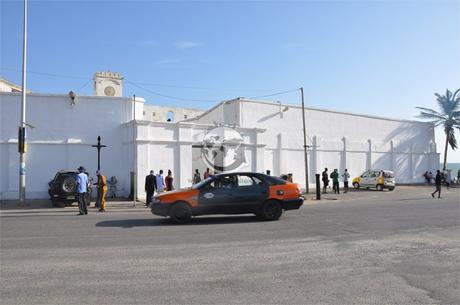
Cape Coast Castle Entrance
For the most part of the tour, I just could not believe my eyes and ears and it took occasional pinches to bring myself back to reality. The castle’s architecture is simply breathtaking! It has an irregular polygon shape with a conspicuous large pentagonal courtyard overlooking the sea and its apartments within are very spacious.

Cape Coast Castle Building Plan
According to Joojo Hanson, the local tour guide, the Portuguese built the first trade lodge in 1555 and called the local settlement “Cabo Corso”. Ha! I guess you now know why cousin Fiifi made those sniggering comments about a certain “Cabo Corso” – Yeah! I knew the town of Cape Coast was named as “Cabo Corso” by the Portuguese but was later corrupted to ‘Cape Coast’. I did a little research before setting off – something that has become a routine. The Portuguese, Dutch, Danes, Swedes and English were in competition to gain control of Cape Coast which was closer to Elmina Castle. Finally, the Portuguese won and built the first trade lodge.
The Swedes also built a permanent fort in 1653 and called it Carolusburg. The English later took over Carolusburg, transforming it into a castle – the Cape Coast Castle.
“These are spacious rooms, large enough to have contained the slaves” said Joojo, pointing to a large underground room that must have, at least, contained close to a thousand slaves, with an opening overlooking the sea. Joojo re-echoed it once more to us.
Similar rooms were also provided for the storage of arms. Canons were all over the castle, some situated within the courtyard to deter rebellious prisoners while others have been strategically mounted along the walls of the castle in readiness for any engagement with an approaching enemy.
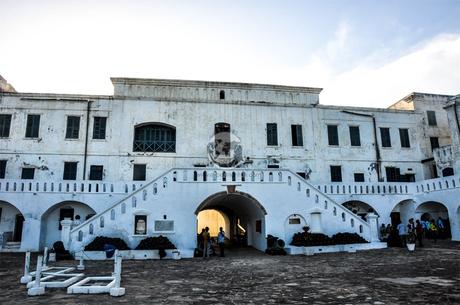
Cape Coast Castle courtyard
There was this particular room with no ventilation and, smaller than the previous ones. It was the “Condemned cell”. Rebellious slaves were kept there without food nor water until they died of thirst, hunger and suffocation.
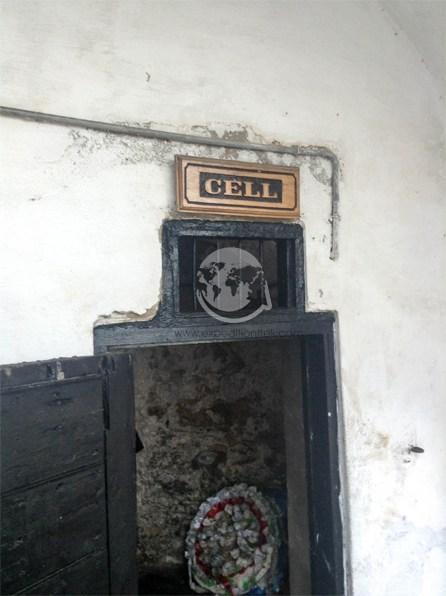
Condemned Cell at Cape Coast Castle
According to Joojo, it is estimated that, around the 1700s, 70,000 slaves were exported annually to the New World.
These revelations gave me goose bumps. I knew I was ready to explore the dark secrets behind the Castle but, simply put, I WAS NOT PSYCHOLOGICALLY PREPARED FOR THIS! I was gobsmacked!
I could barely find the feet to continue the tour but my thirst for heritage knowledge and curiosity to know more urged me on.
We were later led into a museum within the castle which harbored old belongings of the castle’s early dwellers. We were not allowed to take pictures but I managed to capture few shots, though blur. I saw cups, guns, bottles, pipes, among others, belonging to slave masters which have been kept for years.
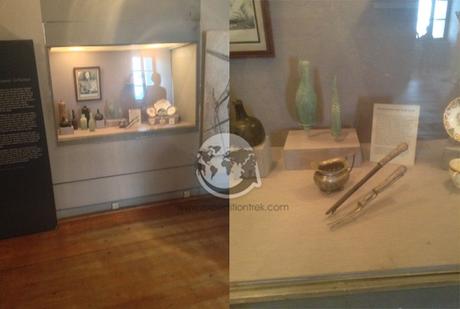
Museum within the Cape Coast Castle
In one of the rooms, there were bouquets of flowers nicely lined-up. I anxiously asked Joojo the purpose of those flowers. He explained that the flowers laid by tourists and Africans in the diaspora who have traced their ancestral roots and found them to be in Cape Coast – Ghana – and also, to pay their respects to their forefathers who endured gruesome treatment before being shipped to the New World in the slave trade era.
To end the tour, Joojo led us to the courtyard where Philip Quaque, the first Ghanaian to receive ministerial training in England, was buried. It was in that same yard that Governor George McLean and his wife were later also buried.
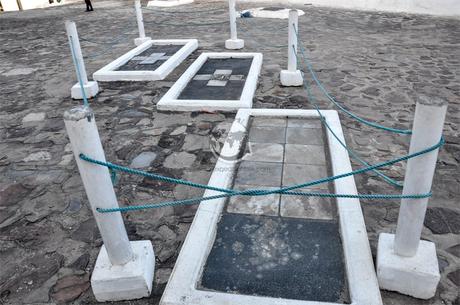
George Maclean, Letitia Landon, and Philip Quaque buried in the Cape Coast Castle courtyard
Having come to the end of the tour, in as much as I had benefited from the knowledge I had acquired, I simply could not believe the things I had heard and seen. Unbelievable!
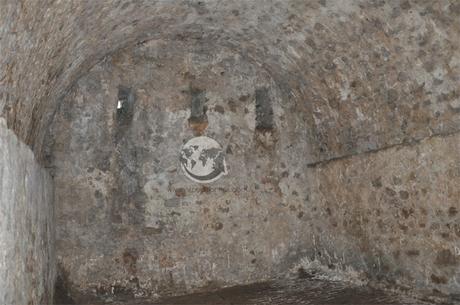
Inside the dungeon of Cape Coast Castle
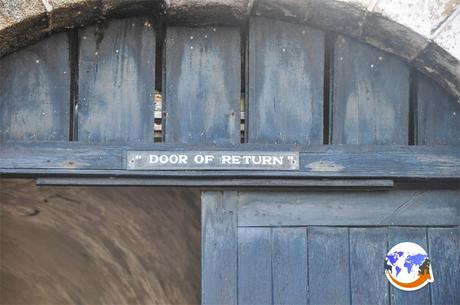
Cape Coast Castle ‘Door of No Return’ now ‘Door of Return’
Next stop from the castle, was the local market, where I wanted to purchase some items for cousins Fiifi and Araba while releasing some of the “steam” I had accumulated from my visit to the magnificent and historic Cape Coast castle. I found the local folks quite interesting, friendly and funny – typical of Fantes. I headed back to the family house to prepare for my journey back to Accra the next day.
Cape Coast castle is now a World Heritage Tourist site and attracts thousands of tourists each year.

